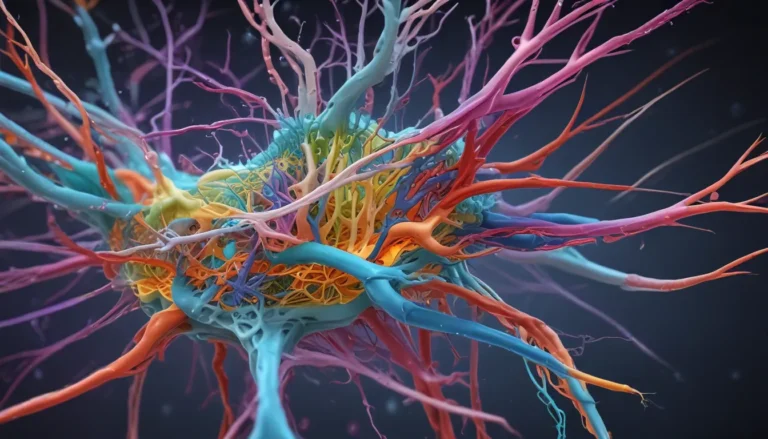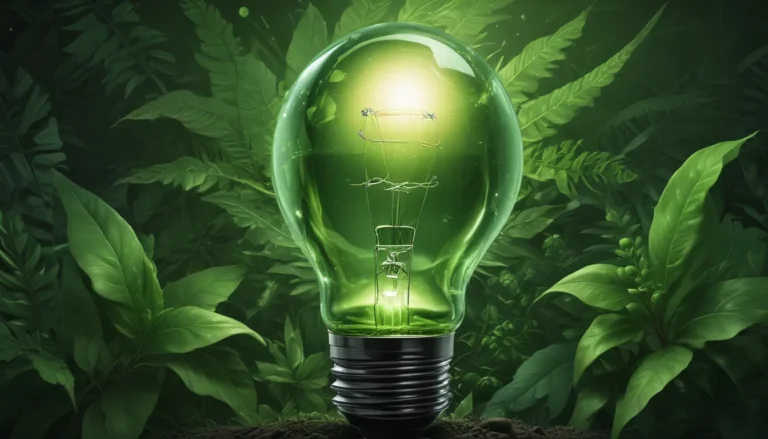A Note About Images: The images used in our articles are for illustration purposes only and may not exactly match the content. They are meant to engage readers, but the text should be relied upon for accurate information.
Regeneration, the incredible ability of organisms to repair and regrow damaged tissues, is a mesmerizing phenomenon that has captivated both scientists and nature enthusiasts for centuries. Whether it’s the miraculous regrowth of a salamander’s lost limb or the astonishing capability of starfish to regenerate their entire bodies from a single severed arm, the world of regeneration is filled with extraordinary and awe-inspiring examples.
In this article, we will embark on a journey to uncover 11 extraordinary facts about regeneration, shedding light on the remarkable capabilities of various organisms to heal and regenerate themselves. From plants regrowing complete organs to animals regenerating spinal cords, we will delve into the intricacies of this biological process and explore the mechanisms behind it.
Get ready to be amazed as we explore the world of regeneration and discover the incredible resiliency and adaptability of the natural world.
Nature’s Marvel: The Astonishing Power of Regeneration
- Nature is Amazing: Animals and plants possess the ability to regrow lost body parts and organs, offering hope for innovative medical treatments in the future.
- Regeneration: A Superpower: It goes beyond growing new limbs; it also involves repairing internal organs and tissues, inspiring scientific research to aid in human healing.
A Closer Look at Regeneration:
Regeneration Across the Spectrum of Life
Regeneration is not limited to a specific group of organisms but is observed in a wide range of life forms, from simple plants to complex animals. Whether it’s the regrowth of limbs in salamanders or the ability of certain plants to regrow from cuttings, regeneration is a truly remarkable feat in nature.
Extraordinary Organ Regeneration in Animals
Some animals possess the astonishing ability to regenerate entire organs, defying the boundaries of what seems scientifically possible. For instance, starfish can regrow their arms, while planarians can regrow a new head and brain within a few weeks.
The Remarkable Axolotl: Master of Regeneration
The axolotl, a type of salamander, stands out for its extraordinary regenerative capabilities. Not only can it regrow its limbs, but it can also regenerate spinal cord and heart tissue, making it a subject of great interest for scientists exploring regeneration.
Seamless Regeneration: Leaving No Trace Behind
Certain organisms have the unique ability to regenerate without leaving any scar tissue, unlike humans who often develop scars after injuries. This seamless regeneration showcases the remarkable regenerative potential present in the natural world.
Beyond Limbs: Internal Organ Regrowth
While limb regeneration is commonly known, some organisms can also regrow internal body parts. For instance, the liver in humans has a remarkable regenerative ability, allowing it to recover from injuries and diseases.
Diverse Regeneration Mechanisms: Asexual and Sexual
Regeneration can occur through various mechanisms, including asexual and sexual reproduction. In some organisms, such as starfish, regeneration can result in the creation of a new individual through asexual reproduction.
Infinite Regeneration: Perpetual Renewal in Nature
While humans have limited regenerative abilities, certain organisms can regenerate indefinitely throughout their lives. This perpetual regeneration enables them to maintain vitality and repair any damage that may occur.
Triggers of Regeneration: A Multifaceted Process
Regeneration can be stimulated by a range of factors, including injury, aging, and environmental cues. Understanding these triggers provides insights for researchers aiming to unlock the potential for regenerative therapies in humans.
Medical Advancements through Regeneration
Research into regeneration not only enhances our understanding of biology but also leads to significant medical advancements. Techniques like tissue engineering and stem cell therapy have emerged from studying the regenerative properties of diverse organisms.
The Complexity of Regeneration: Cellular Mechanisms at Play
Regeneration is not a simple process but involves a series of intricate cellular mechanisms. These mechanisms include cellular reprogramming, stem cell activation, and the coordination of various signaling pathways.
Promises of Regeneration: Healing Humanity
The incredible regenerative abilities observed in nature offer hope for the development of new treatments for injuries and diseases in humans. Scientists are actively working towards harnessing this regenerative potential for tissue repair and replacement in medical settings.
Concluding Remarks
The power of regeneration is truly extraordinary and opens up endless possibilities in the field of biology. From humble flatworms to incredible axolotls, nature showcases remarkable examples of animals that can regenerate lost body parts. Understanding the mechanisms behind regeneration can revolutionize the medical field, potentially leading to breakthroughs in tissue engineering and organ transplantation.
As scientists delve deeper into the mysteries of regeneration, we anticipate uncovering even more extraordinary facts about this captivating phenomenon. The ability to regenerate is not restricted to specific organisms but holds promise for humans as well. With ongoing research and advancements in technology, the future promises incredible feats of regeneration awaiting discovery.
Explore Further: FAQs on Regeneration
- Which organisms have the ability to regenerate?
-
Several organisms, including starfish, salamanders, planarians, and certain fish species, exhibit the ability to regenerate.
-
How does regeneration occur?
-
Regeneration involves cell division and differentiation, where specialized cells divide to form new tissues for the growth of lost or injured body parts.
-
Can humans regenerate body parts?
-
While humans lack the extent of regenerative capabilities seen in some animals, certain tissues and organs like the liver and skin have the potential for regeneration.
-
Can scientists induce regeneration in humans artificially?
-
Scientists are exploring methods to induce regeneration in humans through techniques such as stem cell therapy and tissue engineering.
-
What are the potential applications of studying regeneration?
- Studying regeneration can lead to advancements in wound healing, tissue repair, and regenerative therapies for various conditions and injuries, revolutionizing the field of medicine.
As we continue to unravel the mysteries of regeneration, the future holds endless possibilities for harnessing this exceptional natural phenomenon for the benefit of humanity. Trust in the journey of discovery and join us in exploring the wonders of regeneration and its potential to shape a healthier and more resilient world.






